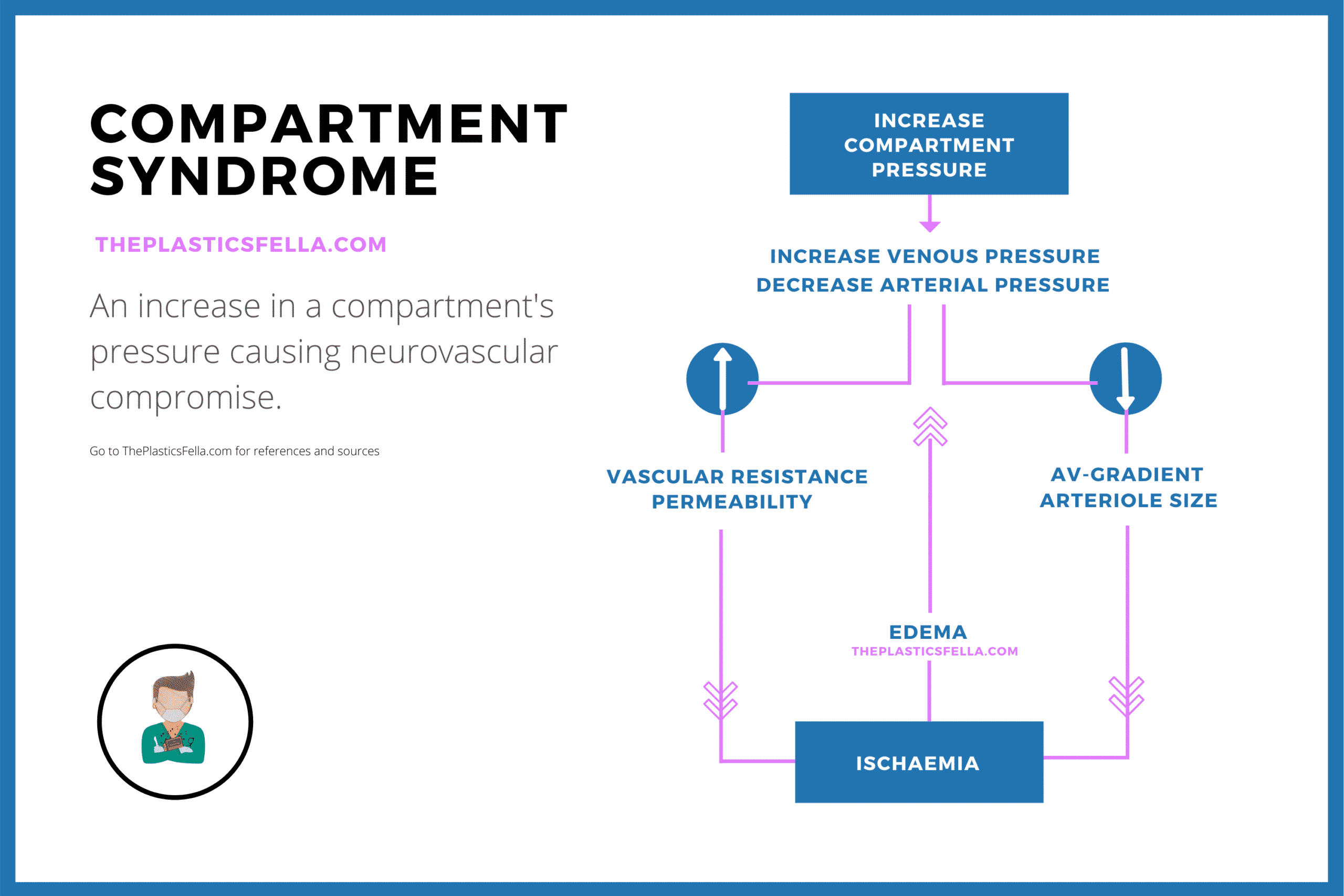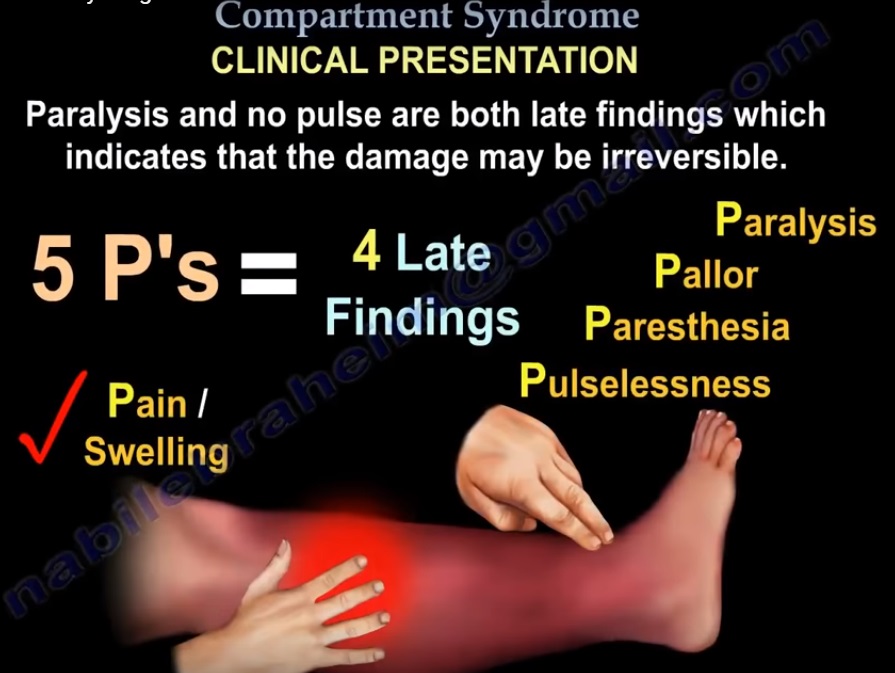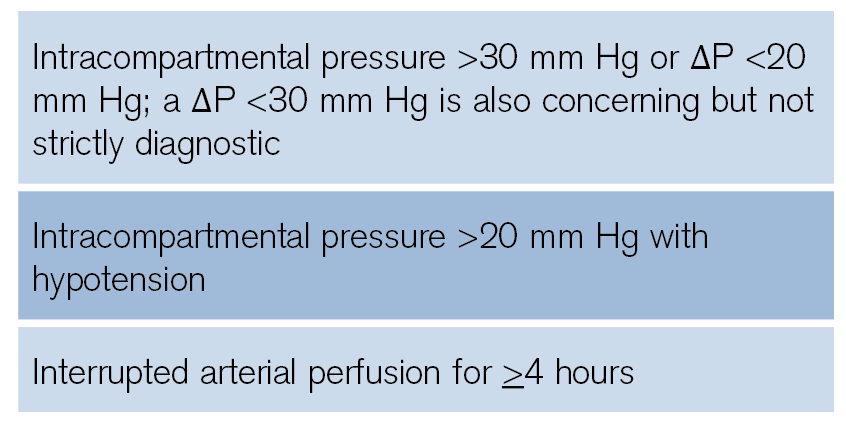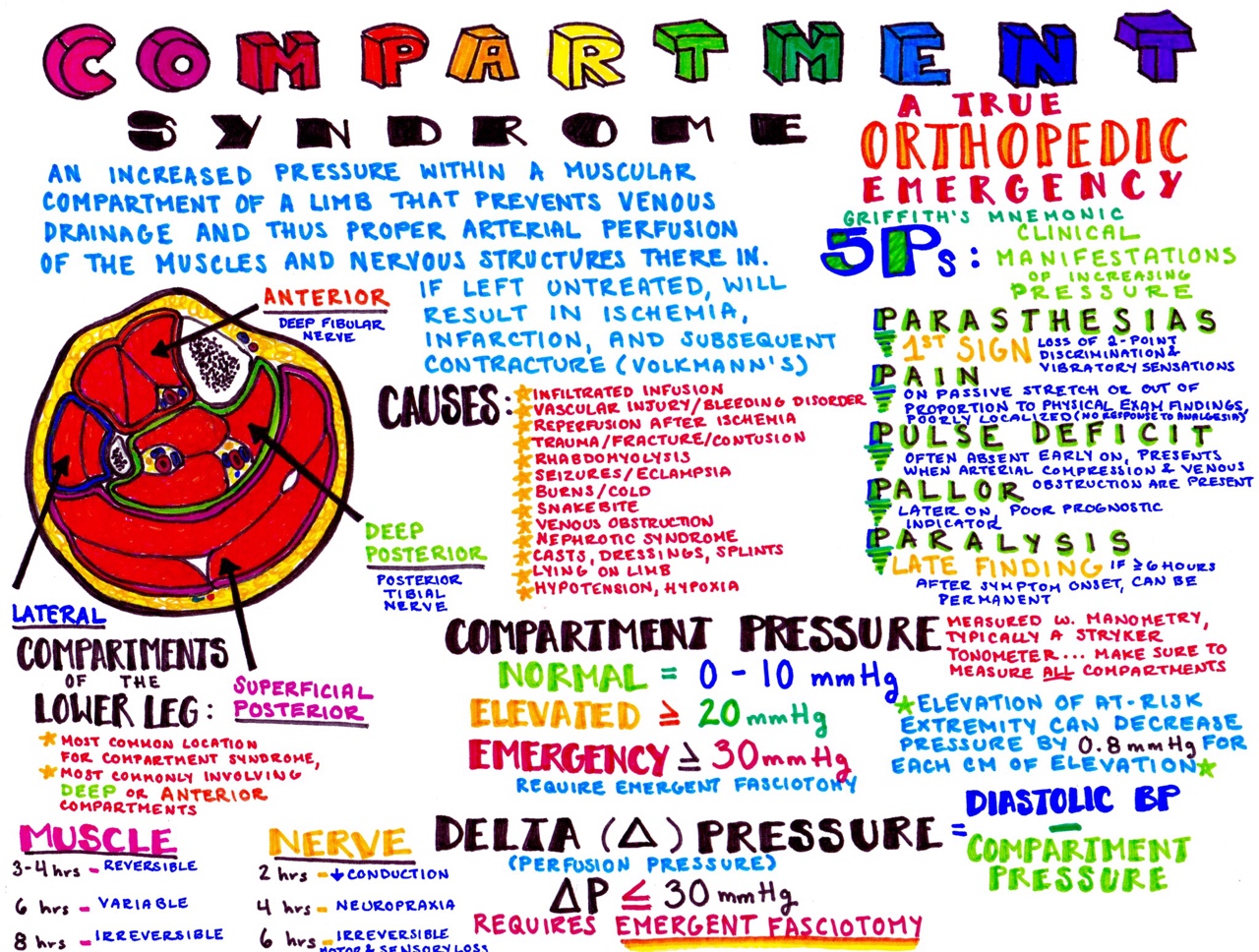Sensational Tips About How To Diagnose Compartment Syndrome

Compartment syndrome is diagnosed when the interstitial pressure inside a muscle compartment is elevated to a point that exceeds capillary blood pressure.
How to diagnose compartment syndrome. In suspected abdominal compartment syndrome, a pressure monitor can be inserted into the bladder through a urinary catheter. Clinical signs of an impending muscle compartment syndrome include tenderness and induration of the affected compartment, increase in the pain on passive muscle stretching, possible. High pressures in the bladder, when there.
Normal compartment pressures are less than 8mmhg. When the diagnosis of compartment syndrome is suspected, the physician can measure the pressure of the compartment by inserting a needle attached to a pressure monitor. Limit your physical activities to those.
Acute compartment syndrome can be caused by: A proper diagnosis of compartment syndrome usually requires direct measurement of “pressures” inside the specific compartment, which is sometimes measured. A plaster cast or tight bandage being applied to a limb before it has.
In addition to the clinical exam and index of suspicion, many surgeons use the delta pressure to help determine the need for fasciotomy. Use a syringe to inject the fluid into your bladder. Measuring compartment pressure in an obtunded.
Tests and diagnosis of compartment syndrome, your doctor will give you a physical exam to check for signs of acute or chronic compartment syndrome. How is compartment syndrome diagnosed? In order to diagnose compartment syndrome, doctors at nyu langone perform a physical exam and a test to measure the pressure inside the muscle compartments.
Although compartment syndrome is a clinical diagnosis, measurement of compartment pressure can be helpful in certain clinical scenarios. To help relieve the pain of chronic exertional compartment syndrome, try the following: If the provider suspects compartment syndrome, youll need a test to measure the pressure.

















